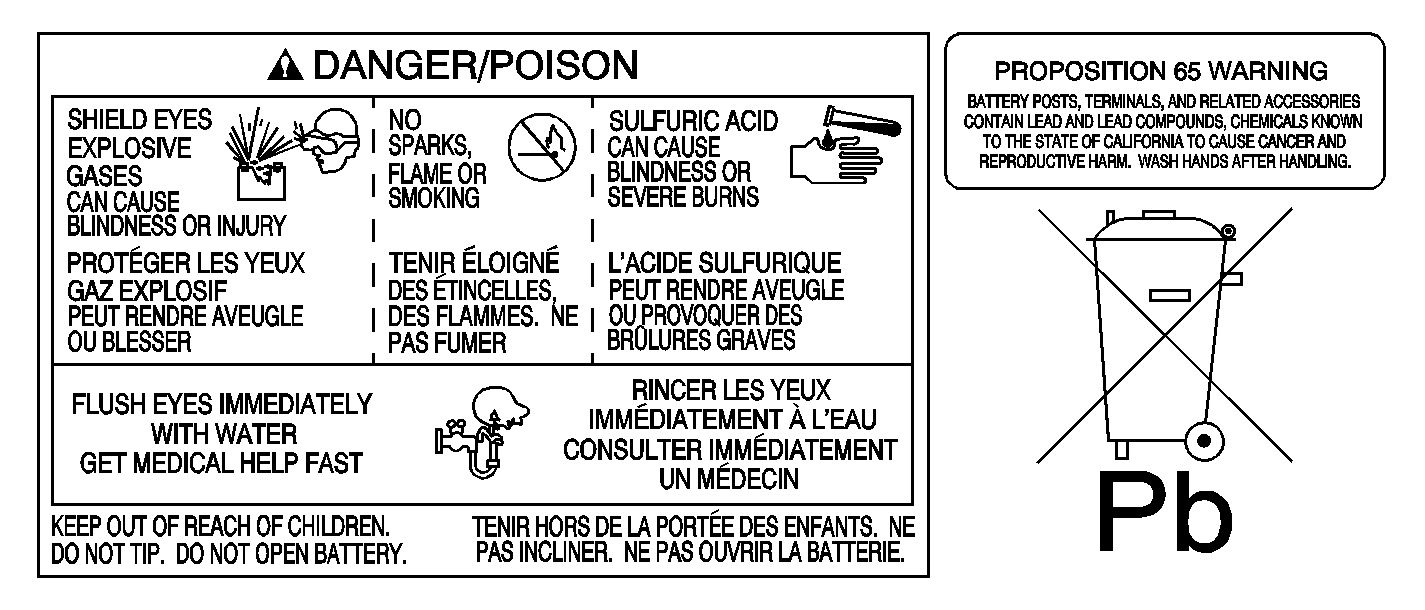
Caution: Batteries produce explosive gases. Batteries contain corrosive acid.
Batteries supply levels of electrical current high enough to cause burns.
Therefore, in order to reduce the risk of personal injury while working
near a battery, observe the following guidelines:
• Always shield your eyes. • Avoid leaning over the battery whenever possible. • Do not expose the battery to open flames or sparks. • Do not allow battery acid to contact the eyes or the skin. - Flush any contacted areas with water immediately and thoroughly. - Get medical help.
Important: Because of the materials used in the manufacture of automotive lead-acid batteries, dealers and service shops that handle them are subject to regulations issued by various state or local agencies. Other regulations may also apply in other locations. Always know and follow these regulations when handling batteries.
Batteries that are no longer wanted must be disposed of by an approved battery recycler and must never be thrown in the rubbish or sent to a land-fill. Batteries that are not part of the vehicle itself, must only be transported on public streets for business purposes via approved hazardous material transportation procedures. Battery storage, charging and testing facilities in repair shops must meet various requirements for ventilation, safety equipment, material segregation, etc.The maintenance-free battery has no vent plugs in the cover. The battery is completely sealed except for 1 small vent hole in the side. This vent hole allows the small amount of gas that is produced in the battery to escape.
The battery has 3 functions as a major source of energy:
| • | Engine cranking |
| • | Voltage stabilizer |
| • | Alternate source of energy with alternator overload |
The battery specification label, example below, contains information about the following:
| • | The test ratings |
| • | The original equipment catalogue number |
| • | The recommended replacement model number |

Battery Ratings
A battery may have 3 ratings:
| • | Amp Hour (AH) |
| • | Reserve Capacity (RC) |
| • | Cold Cranking Amperage (CCA) |
When a battery is replaced, use a battery with the same ratings. Refer to the battery specification label on the original battery or refer to Battery Usage.
Amp Hour (AH)
The amp hour rating of a battery is the amount of amperes it takes a fully charged battery to be fully discharged over 20 hours at a constant temperature of 27°C (80°F). Refer to Battery Usage for the amp hour rating of the original equipment battery.
Reserve Capacity (RC)
Reserve capacity is the amount of time in minutes it takes a fully charged battery, being discharged at a constant rate of 25 amperes and a constant temperature of 27°C (80°F), to reach a terminal voltage of 10.5 volts. Refer to Battery Usagefor the reserve capacity rating of the original equipment battery.
Cold Cranking Amperage (CCA)
The cold cranking amperage is an indication of the ability of the battery to crank the engine at cold temperatures. The cold cranking amperage rating is the minimum amperage the battery must maintain for 30 seconds at -18°C (0°F) while maintaining at least 7.2 volts. Refer to Battery Usage for the cold cranking amperage rating for this vehicle.
